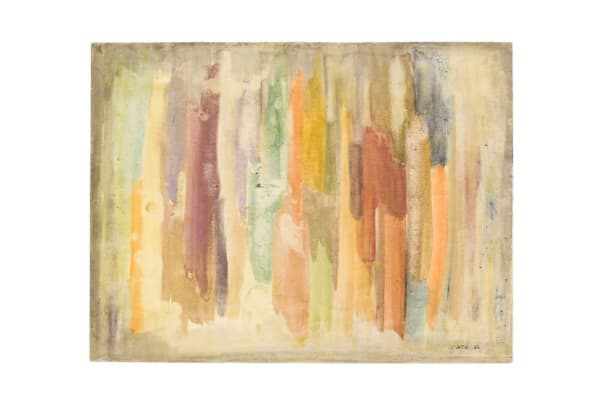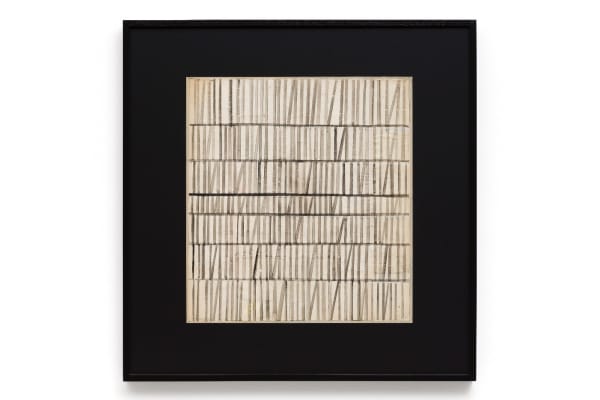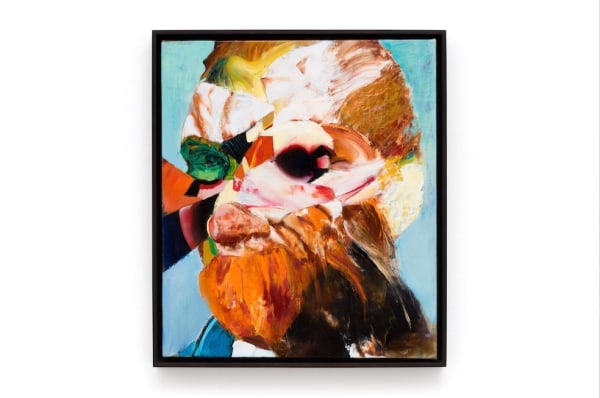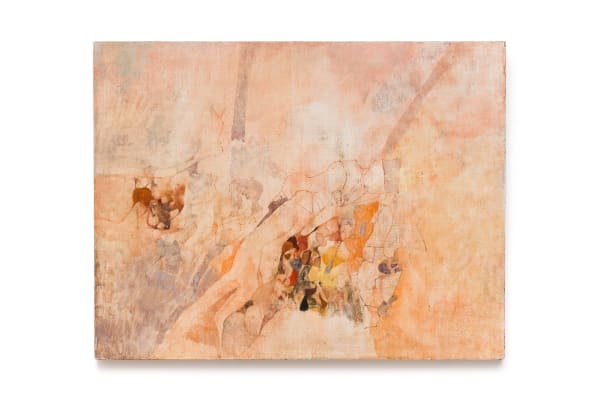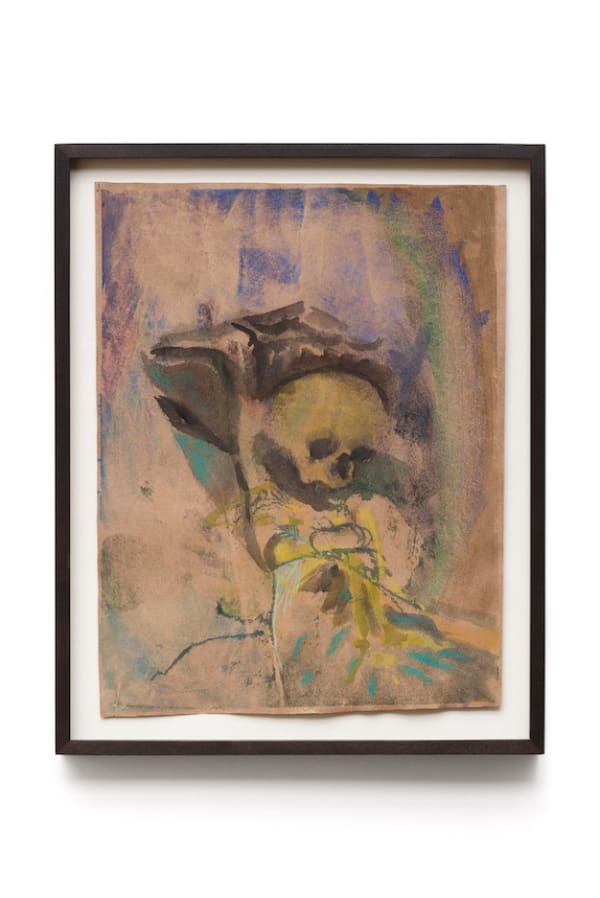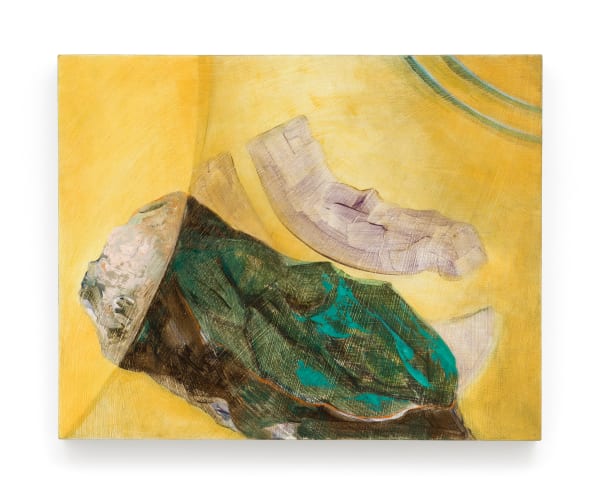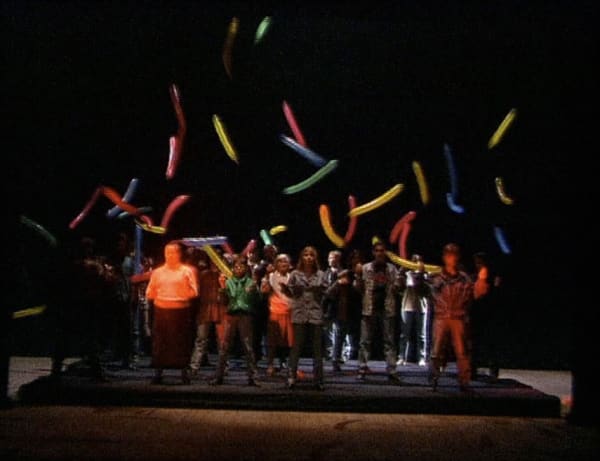Track Changes by Plan B
Curated by Plan B
Ioana Batranu, Rudolf Bone, Sorin Campan, Victor Ciato, Horia Damian, Belu-Simion Fainaru, Adrian Ghenie, Octav Grigorescu, Victor Man, Ciprian Muresan, Iulia Nistor, Miklos Onucsan, Serban Savu
The exhibition Track Changes takes the model of a boîte-en-valise show, following the program of Galeria Plan B through a retrospective and subjective selection. Looking at the past and trying to construct a possible narrative, this show links different positions in Romanian art of the last fifty years. It traces a line from the dictatorial regime of the communist times, when art had to negotiate its existence within the context of state censorship (softer in the 1960s and very harsh in the 1980s), and the post-communist transition of the 1990s – when art took its socio-political role very seriously – until the 2000s, marked by an autonomous and independent position in a broader context of the international art field.
The relative political openness experienced in the 1960s, after the dark 1950s, allowed artists to exhibit works that didn’t respond to the official political discourse, artists who – as Octav Grigorescu suggested – were dreaming of a blissful place of the image. This kind of art was envisioning an autonomous place in relation to the social and political reality, recreating a connection with the grand tradition of art and philosophical thinking. The iconic watercolors of Victor Ciato, entitled Moment 0 (the self-proclaimed moment of a new beginning), the metaphysical painting of Sorin Campan, the utopian spaces of Horia Damian, and the mythological universe of Octav Grigorescu are representative (works) for those visionary years.
Once the new dictatorial ideology had enforced additional constraints (following Ceausescu's return from China and North Korea in July 1971), the late 1970s and the 1980s witnessed a reinstatement of the social and political art that responded subversively and courageously to the difficult context of the time. Artists such as Onucsan or Bone resisted the pressures of the regime through conceptual art and performance, while Ioana Batranu responded to the issues of this enclosed, corrupt, and confused society with painting, following her own analytical tools of filtering. The artists of the 1980s and 1990s referred persistently to social and political issues, animating their work at the same time with a poetic vision, a synthesis which is apparent in diaspora-artist Belu-Simion Fainaru's work but which remains essentially political.
Alongside other voices of their generation, Ciprian Muresan, Adrian Ghenie and Serban Savu engage the recent past of Eastern Europe as an occasion to extricate the very notion of history from ideological falsification, to bind it up with personal experience, conceptual accident and the history of art. Equally concerned with global issues and immune to the utopias of revolution or liberalism, artists from the 2000s generation conjoined their discourse rather with a metaphysical and apolitical approach. Both Victor Man and Iulia Nistor (a young voice of the diaspora), deal with the conditio humana in these uncanny times, and reimplement an autonomous art language in the contemporary context.
The visual material exhibited here oscillates between metaphysical and political issues, understood as responses to the same reality and connected dialectically. The last fifty years of Romanian art is following just as other so-called peripheral spaces did, the sinuous road of a society passing from dictatorship to democracy and globalization. But, regardless of the perspective in each artist's oeuvre – either the self as a point of reference or the world around it – the form of expression tying them is the poetic. None of the works on display illustrate didactically a single point of view, but they all show a great capacity of adding new meanings and layers every time and in each context they are shown. Perhaps the quality of this show resides in the mirror effect itself that changes the background of the works while keeping them as examples of a circular historical flux, always playing between the autonomous condition and the political engagement and back.
Plan B opened 2005 in Cluj, Romania initiated by Mihai Pop and Adrian Ghenie; Plan B functions as a production and exhibition space for contemporary art and at the same time a research center focusing on the Romanian art of the last 50 years, by revealing works of remarkable artists without previous international exposure. Since 2008, Plan B is running a permanent exhibition space in Berlin, Germany and is coordinated by Mihai Pop and Mihaela Lutea.
About the artists and works in the show:
Ioana Batranu (b. 1960, lives and works in Bucharest) approaches themes that are marginal in relation to what used to be the official culture in Romania and expresses them with acute sensitivity, in a permanent vacillation between subjectivity and reality. There are a few recurrent themes (Melancholic Interiors, Enclosed Gardens and Latrines) which, seen together, form a coherent image of her personal project: looking for the point in which the break with the world and the attempt to make peace with it are simultaneous in her existence. The conflict between the two leads the artist to subjects located at the periphery of the society in which she lives and never to the center thereof. Studies for the Latrines series of oil paintings, the watercolors on view reconsider the harsh reality of the late 80s, which coincided with the downfall of the communist regime and the outbreak of the 1989 Revolution. The bleak, impersonal interiors become instances of an alienating public space defined by the loss of privacy and strict daily routine.
Rudolf Bone (b. 1951 in Oradea, Romania lives and works in Oradea) is one of the most important sculptors and performance artists of his generation in Romania; he comes from the experimental context Atelier 35 Oradea - the young group of the Romanian Fine Artists' Union - active in the 80's, partially in the underground, without a real political and financial support, far from ideology and even subversive towards the communist regime. The art of Rudolf Bone is a significant reference for understanding the experimentalism and reconsidering sculptural practice in Romania. Bone is remarkable in his ability to combine a light touch and playful approach to art making, with his constant and serious preoccupation for finding a stable and unique truth. Confronted with the political and social reality of the Ceausescu era, his work got a more and more subversive note. The artist has been consistently intrigued by the specificity of different materials; he worked with matter as diverse as sand, soil, string, glass, photography, aluminium foil castings, and live plants and fish and extended his sculptural practice into performance. Interested in the idea of art in progress and the ephemeral character of the artwork, he is often recurring to breaking glass in his happening, as in Haiku, first realized in 1986. With this work, Bone is also tackling a central idea for the artistic creation: the attachment of the artist to his own creation, to which he sets a forceful counterpoint. The ephemeral object has no chance to develop into cult. The acoustical effect of the breaking glass is carrier of a strong message: the force of the moment impresses itself deeply into the viewer’s perception. The artist’s physical involvement in his own happenings during the 80s in Romania was a call for participation and involvement.
Sorin Campan's (born 1940, lives and works in Cluj, Romania) works achieve their appearance of simplicity through a nuanced reflection on the instruments of painting and a series of detours. Their enigmatic articulation demands a patient reading: simple images like nocturnal landscapes or still lives with fruit are pretexts to localize mystery, to subject it to a kind of order, which does not coincide with its translation or explanation. Beyond the always surprising dosage of transparency and secrecy, the quality of the painting – the austerity of means and the often exuberant chromatics – make Campan a remarkable artist.
Victor Ciato (b.1938, lives and works in Cluj) is one of the few post-war Romanian abstract painters who did not surrender to the pressures of Socialist Realism. On the contrary, in reaction to the oppressive system, Ciato detached himself from the dominant aesthetics marked by figuration and developed his own artistic reality based on pure abstraction. The two watercolors presented are part of a series entitled 'Moment 0', painted between 1966 and 1968. After finishing his studies at the Fine Arts Institute Ion Andreescu in Cluj in 1964, Victor Ciato's ‘Moment 0‘ represented a turning point in his artistic practice. In this way he wanted to free himself from the academic norms and the ballast of prolet-cultist painting and reinvent – in a real modernist manner – creating his own norms. In this way he achieved the series of abstract watercolors, works that were not meant to represent anything in particular. They are puristic abstractions, colored in a refined manner; nowadays, their artistic value is doubled by the importance of the auto-formative (self-formative) exercise, performed in those circumstances. Related to the art of that time, the search into the problematic field of the non-figurative can be perceived as a radical gesture of re-definition.
Horia Damian (1922-2012) was born in Bucharest, where he had his first personal exhibitions, before settling to Paris in 1946. He had encounters and collaborated with artists like Fernard Leger, Constantin Brancusi, Auguste Herbin, Saldavor Dali and Ives Klein. Horia Damian‘s work is rooted in a European tradition of monument builders, most admirably exemplified by his fellow Romanian Brancusi in such structures as the Column of the Infinite and 'The Gate of the Kiss'. Through the deliberateness of the choices of his subjects and the analysis in depth of a very few themes, Damian may be likened to Christo who also reveals the infinite variety of object-ideas through work cycles. But unlike Christo and Yves Klein, Damian‘s friend and contemporary, Damian is ultimately concerned with the intuition of an extra-terrestrial spatial order. Damian created monumental, symbolic sculptures giving them a metaphysical perspective that would distinguish them from the contemporary works of American Minimal Art made by artists like Ronald Bladen, Robert Grosvenor or Tony Smith.In 1975 he constructed for the Guggenheim Museum in New York 'The Hill’. The director of Guggenheim Museum of that time, Thomas Messer writes about Damian‘s works: in all of these, Damian aims for essentially the same results and all his concepts therefore have parallel meaning within his total oeuvre. Damian‘s art, based upon impeccable craftsmanship and an obsessive preoccupation with materials, cannot be faulted for lacking concreteness. But despite the sparseness and reductiveness of Damian‘s structures, minimal and formalistic interpretations do not suffice in this case. For his explicit references are to a celestial rather than a terrestrial space, to an ideal rather than a palpable world order, and to sacral rather than temporal realities.
Belu-Simion Fainaru (born 1959 in Bucharest, Romania) lives and works in Haifa, Israel. Făinaru’s work uses a wide range of media, such as sculpture, installation, drawing and video. The works contain several layers of meaning that touch upon Jewish-Romanian history and issues of identity and territory. Although his predilection for these subjects is indisputable, Fainaru’s oeuvre also unmistakably addresses universal human themes.Dr. Daniel Wayman of Tel Aviv University writes on the practice of Belu-Simion Fainaru: Over the years the artist Belu-Simion Fainaru has coped with issues connected to the concept of the nothingness that drives his creativity. The monastically compressed characteristics of the works, the sparing choice of materials, the limited forms and colors (chiefly black and white), as well as the use of Hebrew lettering, direct the viewer to symbolical spiritual meanings and to philosophical issues beyond the identification of the present physical object. In some of the objects derived from the ready made concept in art, the tension is created by disruption of the functionality and by the disconnection from useful purposefulness. These duality systems prompt us to engage in queries regarding the existing present, the identity or actual reality that we apprehensively embrace when facing the threat of the void and the nothingness.As in Black Sea, 2008, the black liquid as a recurrent element in his work, refers to the image of the black milk, that appears in Paul Celan's poem Fugue of Death as a recurring theme: Fugue of Death/Black milk of daybreak we drink it at nightfall/we drink it at noon in the morning/ we drink it at night we drink it and drink it.Like Celan, Fainaru combines contrasts creating a rich symbolic reality derived from the past and the present, from the sacred and the profane, from the soul and the body. Like Celan’s meridian address that describes a symbolic search for a map of his childhood and an aspiration to find a place that is no place, as in the poem where he finds himself anew, thus does Fainaru combine objects and images, sights and memories that create an internal and external journey in search of identity and place.
Adrian Ghenie (b. 1977, works in Cluj and Berlin) isolates and abstracts particular episodes fromthe convulsed history of the 20th century. His paintings are brimming with history while also manifesting astrange detachment from it: historical scenes are reconstructed as tragic or comic dialectical images,disconnected from chronological continuum, familiar in their references and strangely elusive as reconfiguredsums of these references. In their suspension, they materialize accidental intersections of self and history.
Octav Grigorescu In the person and art of Octav Grigorescu (1933-1987) there coincided a typically avant-garde nostalgia for the primordial and worship of the elementary, on the one hand, and a postmodernist taste for crepuscular delights and the presentiment of death, on the other. Born in 1933, Octav Grigorescu died in 1987 at the age of just fifty-four, but during his short lifetime he created a body of work that made a mark on twentieth-century Romanian art. A draughtsman, engraver and painter, he was hugely productive.Octav Grigorescu plunges into his archaeological, historical, mythological, biblical and even everyday reveries, filtering in an extreme subtle way echoes of Da Vinci, Poussin and Hans von Marees, to which any number of other names might also be added. The memory is also at work at the strictest level of technique when Octav Grigorescu recreates the illusion of the palimpsest, which is extremely suggestive precisely in his historical paintings, where the evocation of temporality is a necessity and a condition. The integral realism of which Octav Grigorescu speaks at one point means the rehabilitation of the plenitude of the world as a whole and emergence from under the fascinating curse of the fragment. His historical paintings and those on biblical themes are a series of visions in the original, etymological sense of the word, visions that tend to capture key moments in the history of mankind. A unifying perspective joins the cruel events of history with biblical times.
The works of Victor Man (b. 1974, lives and works in Berlin and Cluj) study the limits of understanding from a different perspective: the fine dosage of contextual references both encourages and renders incomplete an elucidation of what might be happening in his paintings, of the nature of their diaphanous incidents. Man returns to the subtle infrastructure of information and visual clues that allows a scene to be imaginatively placed somewhere, and assumed to represent ‘something’, and pushes this limit until it folds upon itself. The distinct visual vocabulary of Victor Man is informed by a constant exploration of the paradoxes and contrarieties of his own being. ‘Victor Man operates in the depths of vision, on the eye, on the uterus-eye begetting visions on things, meaning the divine seeds, planes, sketches and croquis. In his work, Victor Man is tirelessly and obstinately looking for the level at which one may operate, at which he may intervene through sight over the formation of things, the highly spiritual and ultimate operations level of encounter between the eye and the uterus, where painting’s plasticity is found and alchemically identified with the germinative plasticity of things and nature.
An additional proof of his pursuit and heroic advancement on his path, that Victor Man heroically and epically proves himself capable of, is this recent painting (2015–2016) titled Early Paradise (and actually representing a study for a World Flag), this exceptional painting within painting in which representation is explicitly allegoric, the illustration of the astral eggs and the ovular deformed head stretched towards the maternal breast, an egg, a tear, a bud, a drop of dew, etc., culminating with a new stage in the imagination of the de-colouring, of the shadowing, this time by simply effacing colours, as in a restoration work and the return, thus trans-visual, to the drawing beneath, by blotting out to the canvas as reality support that creates a flash upon the covered light, shadowed by history. (from a text by Bogdan Ghiu)
Ciprian Muresan (b.1977, lives and works in Cluj) turns the quotidian experience upside down, along with art history’s authority. His sharply ironic works tackle the social transition in today's Romania, the replacement of values like tradition and religion, but also the substitution of communist propaganda for the new imagery of a consumerist society. Video holds a special place in Ciprian Muresan's extensive practice including drawing, sculpture and installation. For Dog Luv (2009), one of his early video works commissioned for the Romanian Pavilion at the 53rd Venice Biennale, Muresan sets a social debate in a theatrical context, as handcrafted puppets of black dogs were animated based on a text by playwright Saviana Stanescu about humanity’s darkest traits. The dialogue about torture and execution gradually extends into an enactment of the cruel actions discussed, the power relations between the five dogs shifting dramatically throughout the video, from solidarity to violence. By dressing the characters in black, a method used by puppeteers to hide from the audience, Muresan unmasks the dogs as puppets, while placing the puppets, as well as puppeteers on the same stage, therefore equally redistributing the importance of these elements, and hijacking the traditional format of puppet theatre.
Iulia Nistor (b. 1985, lives and works in Frankfurt am Main) deals with the potentiality of uncertainty and disorientation wherein painting becomes an epistemological instrument. Her painting process is a constant negotiation between informing and discharging the image and focuses on qualia (the qualitative character of experience), as well as on the sensual aspect of things. Nistor works at the intersection of semiotics and visual phenomena, where a signifying language of images is built into a sensuous field using overlays and veils of tone in order to create phenomenal depth. The multiple layering and the repeated process of adding and subtracting introduce the dimension of time, which contrasts with the immediacy of the expressive and symbolic elements. Coordinates also determine the position in a 3-dimensional space of qualia for E1 F8 P4 (2016) and E7 W6 A3 (2016) as Pieces of Evidence – a format of oil on wood paintings with the same dimensions 40 × 50 cm/ 50 × 40 cm. Nistor thus questions conventions of our perception and thought in order to create new potentiality of understanding. She is creating iconic images from the ephemeral, while trying to preserve it.
Serban Savu (b. 1978, lives and works in Cluj) paints the New Man – the long-awaited product of the communist society, created in the ideological laboratory – caught in the melancholy of his daily condition of anonymity in the transition to capitalism. The distance between ideal and real loads the image with tension as Savu paints the image of a world after the failure of a historical project. Characterized by empathy and close scrutinity, observation and abstraction, reduction and re-composition, his paintings are capable of initiating an assessment of the present moment understood in a wider, historical sense.Darker than most of Savu's paintings of quotidian tableaux, the eerie landscape in Blackout (2016) is a rare scene because of the absent human figure, which is however present through the ghostly silhouette of the partly collapsed high voltage transmission tower. Derelict in the vast natural expanse, the massive man-made structure acts both as a reminder for the failure of technology, and a reflection on humanity at large.
Miklos Onucsan (b. 1952, Gherla, Romania lives and works in Oradea) works in a conceptual vein, addressing a wide range of issues that are highly personal and yet manage to acquire a more general resonance. His interventions also bring to mind a Fluxus-like spirit. In his own statement his work does not seek to represent or to replace the existing reality, but rather guides our perception through almost imperceptible alterations of what we encounter in the world. For Stiff Ballet for the End of the Century (1996), Miklos Onucsan used a real experience as starting point: on a terribly hot day, as people were trudging along the street, a child released a balloon that started dancing in the air, while deflating. From that fleeting moment, Onucsan developed a performance enacted by a group of people acting rigidly, but simultaneously involved in a choreography activated by the balloons they hold and let go – a free, unedited and unpredictable dance within the predefined, fixed coordinates of the performance, as much as a poetic tribute paid to the century that was about to end, based on a both critical and humorous comment.
-
 Ioana Batranu, Melancholic Interior (corridor), 2013
Ioana Batranu, Melancholic Interior (corridor), 2013 -
 Sorin Campan, Peisaj de noapte, 1970s
Sorin Campan, Peisaj de noapte, 1970s -
 Victor Ciato, Momentul 0, 1966
Victor Ciato, Momentul 0, 1966 -
 Horia Damian, Untitled, 1952
Horia Damian, Untitled, 1952 -
 Belu-Simion Fainaru, Black Sea, 2008
Belu-Simion Fainaru, Black Sea, 2008 -
 Adrian Ghenie, Degenerate Art, 2016
Adrian Ghenie, Degenerate Art, 2016 -
 Octav Grigorescu, Sem título, 1960s
Octav Grigorescu, Sem título, 1960s -
 Victor Man, Untitled, 2015 - 2016
Victor Man, Untitled, 2015 - 2016 -
 Iulia Nistor, Evidence, L7 F/W 0 P5, 2016
Iulia Nistor, Evidence, L7 F/W 0 P5, 2016 -
 Iulia Nistor, Evidence, E7 W6 A3, 2016
Iulia Nistor, Evidence, E7 W6 A3, 2016 -
 Miklos Onucsan, Stiff Ballet for the End of the Century, 1996
Miklos Onucsan, Stiff Ballet for the End of the Century, 1996 -
 Serban Savu, Blackout, 2016
Serban Savu, Blackout, 2016



